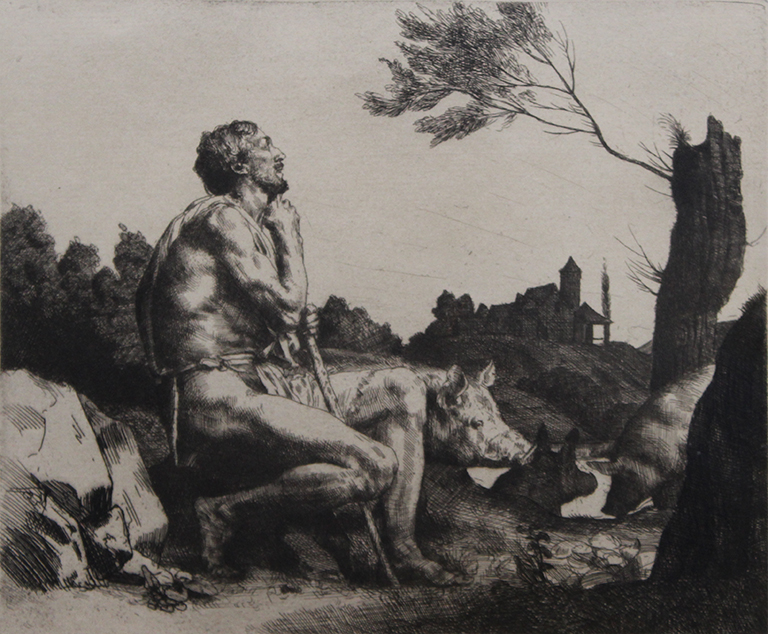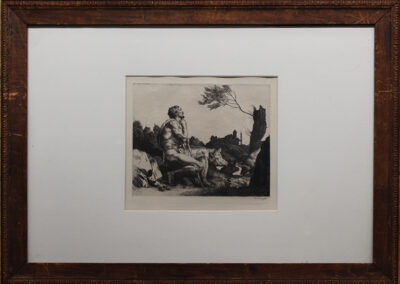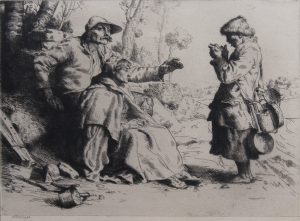William Strang (Scottish/British, 1859-1921)
William Strang was a Scottish/British painter, etcher, and draughtsman. He was born in Dumbarton, Scotland, the son of Peter Strang, a builder, and was educated at the Dumbarton Academy. For fifteen months after leaving school, he worked in the counting-house of a firm of shipbuilders, then in 1875, when he was sixteen, went to London to study at the Slade School at the University College London from 1876–80.
At the Slade School, under the guidance of French painter and etcher Alphonse Legros (1837-1911) he took up etching and it was in this field that he originally made a name for himself. Strang had great success as an etcher and became the assistant master in the etching class. In 1880 he became a founding member of the Royal Society of Painters-Etchers and Engravers. Strang is credited with producing one of the largest woodcuts ever made, “The Plough,” which measured 106 x 120 cm and was engraved from nine joined planks.
By the mid-1890s he had an international reputation, but from this time he turned increasingly to painting, and after the turn of the century he was regarded more as a painter-etcher than an etcher-painter. At first, he concentrated on imaginative and allegorical scenes, but he came to specialize mainly in portraits—one of the most striking examples is “Lady with a Red Hat” (1918, Kelvingrove Art Gallery, Glasgow), in which the sitter is the writer, Vita Sackville-West. Strang produced numerous landscape and allegorical paintings and portraits which were exhibited at the Royal Academy, the Society of Twelve and the International Society, to which he was elected in 1905. Strang was also elected an associate engraver of the Royal Academy in 1906, as a master of the Art Workers Guild in 1907, and became the President of the International Society of Sculptors, Painters, and Engravers in 1918.
Strang died in Bournemonth, England in 1921 and is buried at Kensal Green Cemetery, London. His son Ian Strang (1886–1952) was an etcher, draughtsman, and painter, mainly of architectural and landscape subjects. He wrote The Student’s Book of Etching (1938). Another son, David Strang (1887–1967), was a painter and etcher.
The Prodigal Son, 1882
by William Strang (Scottish/British, 1859-1921)
| Medium | Fine Print |
| Medium Detail | Etching on paper |
| Dimensions | 6 7/8 x 7 7/8 inches |
| Date Created | 1882 |
1 in stock
Contact Us About This Piece



